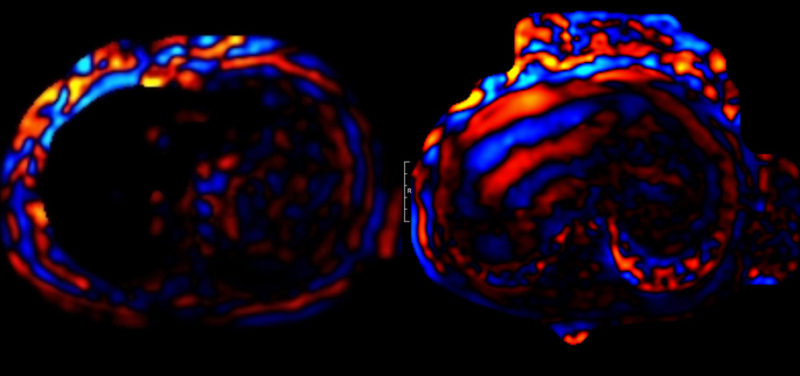
Liver disease in children can stem from a variety of causes, with the most common cause in the United States being obesity. Regardless of why it develops, monitoring liver disease is important as it can ultimately lead to fibrosis and cirrhosis, which makes the liver progressively stiffer.
Traditionally, MRI has been used to look at the anatomic changes in a patient’s liver that would suggest the development of fibrosis or cirrhosis. MRI elastography is a new technology that uses sound waves to allow radiologists to not only look at a patient’s anatomy, but also quantify how stiff the liver is. This can help to monitor disease progression and potentially avoid the need for a painful liver biopsy.
In the past, motion during the MRI scan (usually from breathing) or having high liver iron content would limit our ability of imaging the sound waves moving through the liver. As a result, we would not be able to quantify stiffness. In cases of high liver iron content, a “black hole” would be seen where the liver would be. This was because the signal from the liver would be lost faster than we could produce an image. Cincinnati Children’s is one of a few sites in the United States where a new technique is allowing us to overcome these obstacles by imaging even faster. This means a faster scan for your child with fewer breath holds and a smaller chance of a needing a repeat scan.
Contributed by Dr. Madalsa Joshi and edited by Dr. Alex Towbin.